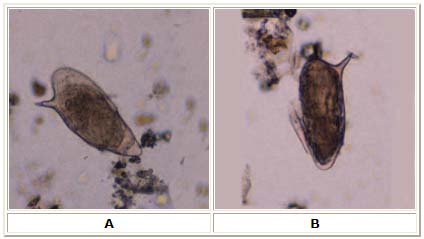Schistosoma
| Schistosoma | ||||||||||||||
|---|---|---|---|---|---|---|---|---|---|---|---|---|---|---|
 Schistsoma mansoni egg
| ||||||||||||||
| Scientific classification | ||||||||||||||
| ||||||||||||||
| Species | ||||||||||||||
|
S. mansoni |
|
WikiDoc Resources for Schistosoma |
|
Articles |
|---|
|
Most recent articles on Schistosoma Most cited articles on Schistosoma |
|
Media |
|
Powerpoint slides on Schistosoma |
|
Evidence Based Medicine |
|
Clinical Trials |
|
Ongoing Trials on Schistosoma at Clinical Trials.gov Clinical Trials on Schistosoma at Google
|
|
Guidelines / Policies / Govt |
|
US National Guidelines Clearinghouse on Schistosoma
|
|
Books |
|
News |
|
Commentary |
|
Definitions |
|
Patient Resources / Community |
|
Patient resources on Schistosoma Discussion groups on Schistosoma Patient Handouts on Schistosoma Directions to Hospitals Treating Schistosoma Risk calculators and risk factors for Schistosoma
|
|
Healthcare Provider Resources |
|
Causes & Risk Factors for Schistosoma |
|
Continuing Medical Education (CME) |
|
International |
|
|
|
Business |
|
Experimental / Informatics |
Editor-In-Chief: C. Michael Gibson, M.S., M.D. [1]
Overview
A genus of trematodes, Schistosoma spp., commonly known as blood-flukes and bilharzia, cause the most significant infection of humans by flatworms (schistosomiasis) and are considered by the World Health Organization as second in importance only to malaria, with hundreds of millions infected worldwide. Adult worms parasitize mesenteric blood vessels. Eggs are passed through urine or feces to fresh water, where larval stages can infect a new host by penetrating the skin.
Taxonomy
There are four species of schistosome which are infective to humans:
- Schistosoma mansoni, found in Africa, Brazil, Venezuela, Suriname, the lesser Antilles, Puerto Rico, and the Dominican Republic. It is also known as Manson's blood fluke or swamp fever. Freshwater snails of the Biomphalaria genus are an important host for this trematode.
- S. japonicum whose common name is simply blood fluke is found widely spread in Eastern Asia and the southwestern Pacific region. In Taiwan this species only affects animals, not humans. Freshwater snails of the Oncomelania genus are an important host for S. japonicum.
- S. mekongi is related to S. japonicum and affects both superior and inferior mesenteric veins. S. mekongi differs in that it has smaller eggs, a different intermediate host, and longer prepatent period in the mammalian host.
- S. haematobium, commonly referred to as the bladder fluke, originally found in Africa, the Near East, and the Mediterranean basin, was introduced into India during World War II. Freshwater snails of the Bulinus genus are an important host for this parasite.
S. indicum, S. nasale, S. leiperi are all parasites of ruminants.
Morphology
Adult schistosomes share all the fundamental features of the digenea. They have a basic bilateral symmetry, oral and ventral suckers, a body covering of a syncytial tegument, a blind-ending digestive system consisting of mouth, oesophagus and bifurcated caeca; the area between the tegument and alimentary canal filled with a loose network of mesoderm cells, and an excretory or osmoregulatory system based on flame cells. Adult worms tend to be 10-20 mm long and use globins from their hosts' hemoglobin for their own circulatory system.
Reproduction
Unlike other trematodes, the schistosomes are dioecious - i.e., the sexes are separate. The two sexes display a strong degree of sexual dimorphism, and the male is considerably larger than the female. The male surrounds the female and encloses her within his gynacophoric canal for the entire adult lives of the worms, where they reproduce sexually.